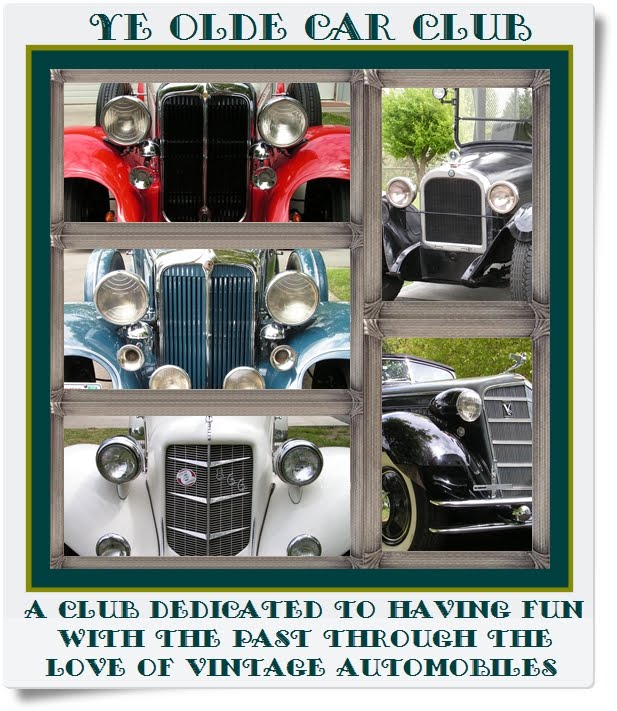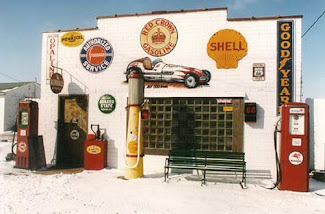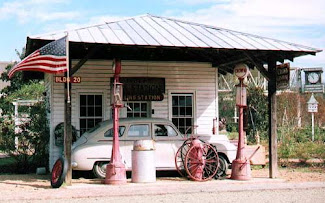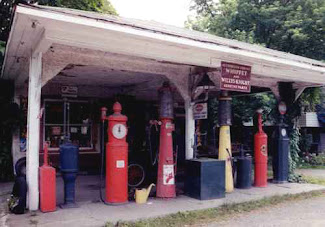1940 Dodge
?This is like opening a time machine.
 Hidden for Half a Century:??
Hidden for Half a Century:??
The 1940 Barn Dodge!
You have heard stories of barn finds before. Some sound incredible, some unbelievable. But here's one that might top 'em all. It's the true story of one 1940 Dodge Deluxe?Sedan.
Back in 1940, life in the Country was running at a different pace. You could leave your house unlocked, and, of course, your car.Television and graffiti were words without meaning. Pearl Harbor was an event of the future. It would take two more years until the United States would enter World War II. Life was hard but good . . .

At about this time VIN *30231403* was built by proud American workers in Detroit, Michigan, one of 84,976 Dodge D-14 DeLuxe four-door sedans manufactured in 1940. A veterinarian from Horseshoe Bend, Idaho, purchased the blue Dodge new at the local Dodge dealer in Boise. He used it to respond to calls all through the war years; his 1944 permit is still affixed to the windshield. Being a very valuable asset during war times, the car was always parked in a dedicated spot in the barn when not in use. In 1948, the good Doctor passed away. The car was put on blocks and covered with bed sheets. No, it was not going to be for sale. Who would have guessed at that time that the Dodge would be asleep for more than 50 years . . .

Children became adults, parents, then grandparents. The old Dodge was still slumbering in the barn. In the late 1980s an attempt was made to awaken and sell the car. Finally, early in 2003, the time had come. The bed sheets were taken off, the car was lifted from the blocks, and the tires were filled up with air. A new owner was found. He took the Dodge to Southern California.

63 years old and with only 42,342original milesshowing on its odometer, this Dodge personifies the term "reference car." More importantly, it represents a rare opportunity to experience how it felt driving a new car in the 1940s.?Time to start our little journey around this amazing Dodge . . . 
The body, amazingly, is straight and absolutely rust free, thanks to being stored in a dry, well ventilated barn, away from the elements. The blue lacquer paint is original, factory applied. Sure, it's worn thin on the tops of the fenders, shows a myriad of nicks, imperfections, and touch ups from the past. There are a few small dings here and there, but not an ounce of body filler nor a single rust bubble. It's all heavy metal! Repainting this car--ever--would be an unforgivable sin! Its patina is irreplaceable and gives the Dodge its inherent value.

Another Dodge industry first for 1940: safety rims! The wheels still feature their factory triple pinstriping, the heavily chromed hubcaps are beautifully preserved. Even the painted red detailing is still intact! Bias ply tires of the dimension 6.00x16 look original as well. I don't think they make "Pennsylvania Rx Supertest Cord S-3" rubber anymore . . .

Open the doors and be invited into a cabin that's 100% factory original. Unmolested, unmodified, unrestored. It has the special 1940s aroma and charm that cannot be duplicated. It should never be restored, instead be enjoyed just the way it is.

Dashboard is a masterpiece of Art Deco design. Fabulous painted metal creates the ambiance of lightly stained wood. Nickel plated accents duplicate the look of then-popular costume jewelry. Every single part seems infused with the designer's idea to create a harmonious environment; details such as the retracting ash receiver lid are simultaneously good-looking and functional. There's simply no comparison to present-day throwaway products, sprouting black plastic appendages everywhere.Nevertheless, the Dodge was built with entirely modern creature comforts. It features dual electric windshield wipers, Sealed Beam lamps, floating power, hydraulic brakes, telescopic shock absorbers, a column-shifted, synchronized transmission, tinted glass, a chromed horn ring, and a host of other innovations.

What was found in the felt-lined, locking glovebox is nothing short of astonishing in its historical context:
Owner's instruction book in its original envelope
"Sentinel" first aid kit, incl. a bottle of "Mercuro-Chrome"
Small upholstery brush
Promotional lead pencil "Compliments of DeRail Pool Hall, Glenn's Ferry ID"
Old bottle opener
Parking stub dated 8/16/1941, from the "Glen Valley Rodeo"
Small metal box containing "Buss Auto Fuses"
"Ideal Split Shot" box cont. a tire valve and a fishing hook
Pair of celluloid sunglasses
"Travel Idaho with CONOCO" road map

Ample space for three on the comfy front bench, featuring "airfoam" seat cushions. Original mohair still looks good, with the unavoidable stains and moth attacks kept to a minimum.

Through large, rear-hinged suicide doors, entry to the spacious passenger compartment is easy, even when wearing a top hat. Luxuriously equipped with arm and foot rests, woven grab handles, beveled-glass interior light, and (unused) ash tray, passengers will invariably exclaim: "This feels like Driving Miss Daisy!"

Roomy trunk sports original jute mats. Original spare wheel and jacking equipment are present, as well as some spares and a small tool tray. Also included is a set of new GOODYEAR tires of the proper size and a set of new inner tubes. We did not feel the need to mount the new tires, however, it might be advisable before embarking on an extended journey.
 A beautiful classic car, ready to be of service!
A beautiful classic car, ready to be of service!
"Let us MARFAK your car!" proclaims TEXACO's old service sticker on the door jamb. Dodge was just lubed and serviced, 2,000 miles ago, in 1948 . . ..
 Note the carmine-colored, bakelite necker knob, Dodge's early version of power assisted steering. If you have to ask why it's called anecker knob, you're probably too young to buy this car.
Note the carmine-colored, bakelite necker knob, Dodge's early version of power assisted steering. If you have to ask why it's called anecker knob, you're probably too young to buy this car. 

Amazingly intricate, heart-shaped grille presents itself in outstanding condition, with brilliantly sparkling chrome. Bumpers and overriders are beautiful and functional, too. Car's brightwork appears excellently preserved throughout. Note the wonderfully maintained running boards, which were optional on the 1940 models.So, what's it like driving a 63-year old Dodge?

Very impressive, thank you very much. Turn on the ignition--with the original "CDPD" key--and press the foot knob for the starter. The engine comes to life instantly, idling almost inaudibly. Pull the gear lever down into first, release the clutch, and you'll pull away smoothly. Everything is smooth about the Dodge. Suspension and brakes transmit a safe and sound feeling. Acceleration is brisk, at least by 1940 standards. All the gauges work. Oil pressure is great and the car runs cool. In a nutshell, it's a delightful cruiser!?Even the PHILCO radio still hums when turned on; it seems the speaker cone needs replacing.

All this car needs is one appreciative caretaker. It's a very rare find and definitely a "keeper" for the right Dodge enthusiast.













































